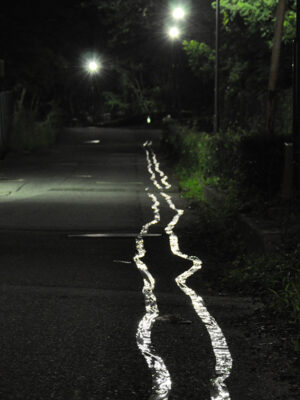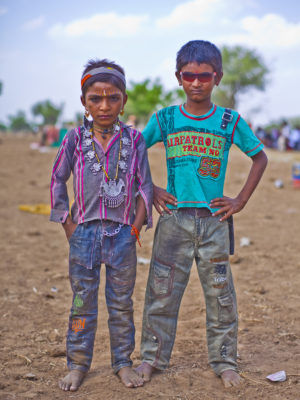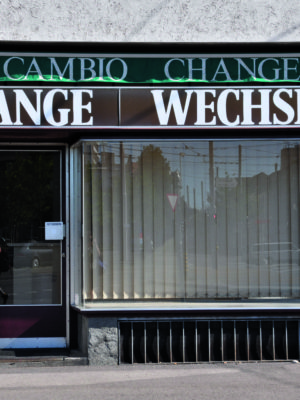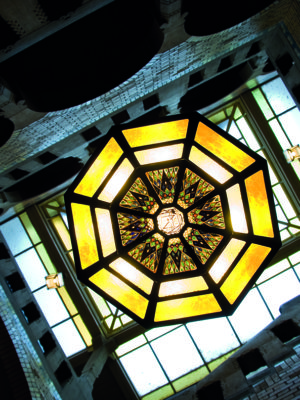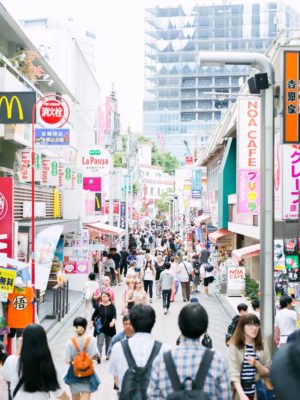Veronika Muráriková: Could you tell me a bit about your beginnings? How did you come to think about jewellery?
Motoko Furuhashi: I didn’t think about jewellery at all when I was growing up. It happened when an opportunity to study abroad presented itself, and I came to America. At first, I was just studying English, but later I met a teacher who was offering jewellery making classes and introduced me to the whole jewellery world. And, like many jewellery artists, I fell in love with it immediately. I like the process, the tidiness, getting into the details. I studied traditional calligraphy before, and I loved the details and the subtle touches even then.
Although my grandfather inspired a lot of my artwork. He practiced traditional Japanese painting, using natural pigments on landscape painting. Some of his process includes field trips to find soil/rock to ground them, and then he used them as a base for his paintings. It becomes almost like sand that you use on the surface. So, I guess we have in common the connection to nature. It’s all linked and connected.
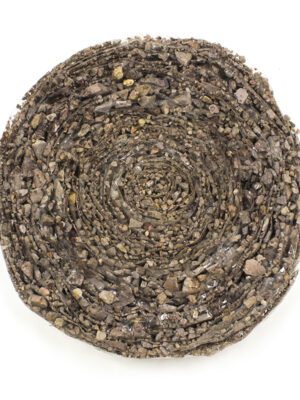
VM: Yes, you have a particular process where you travel to a new place, observe, collect, and create a piece of jewellery from what you are able to find around you. It’s sort of a documentation, a diary of your travels. How did that come about?
MF: I’ve always been fascinated with un-familiar places and enjoy imagining the locations when you plan to travel. Also, as a child, I remember looking at a map of Japan that the school provided you in the geography class in early grade. I had no idea what those roads, streets, and signs were, but I always imagined that there was, for example, my favorite candy store, and I’m over here so let me go there and explore the way. I enjoy these daydreams and expand my imagination with my own mind maps.
And now when I’m actually traveling, I have a similar process of thinking, for example, what if this place where I’m standing right now, what if there was an amazing festival in the past where many people were dancing and enjoying themselves. Or maybe the opposite.
I like to imagine and fantasise about every specific area that I visit and have an understanding of where I am in a very poetic way.
I like to imagine and fantasise about every specific area that I visit and have an understanding of where I am in a very poetic way.
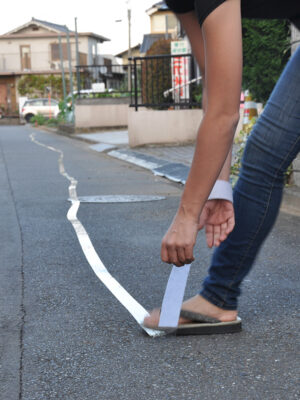
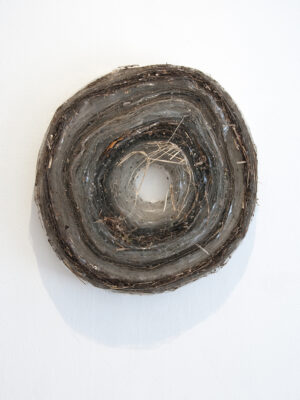
VM: The core of your jewellery is made of tape that you roll around the ground and collect different rocks, dust, and bits. It’s funny because by doing that, anyone who is looking at that brooch starts fantasizing about the origin of these grains and bits and the place they come from in a very similar way that you just described.
MF: Exactly. I don’t want to manipulate the material too much. I want it to be authentic, without too much controlling or editing. I’m just encapsulating it and leaving it for your imagination.
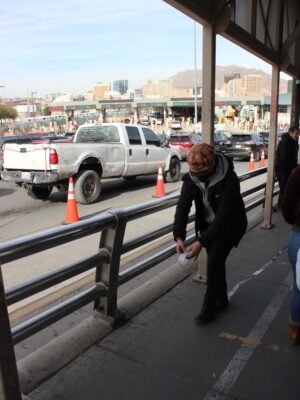
VM: Have you ever come across any unexpected materials in your art pieces that you had to remove?
MF: Yes, there was one time when I made a long piece in Japan, it was around 500 meters and weighed around one kilo. After rolling the tape, the roll had become a two-meter-wide circle. I had it shipped directly to the gallery space, but when they received it, they told me that the shipping box smelled really bad, like something was rotting. So I went to check it out and discovered that during the nighttime when I was collecting materials, I didn’t see everything that ended up on the tape. There was a dead gecko that had been picked up. Normally, I find a lot of ants or ladybugs, which are okay, but this was a bit unfortunate with this particular piece and I had to go to the gallery and cut it out.
VM: How do people usually react when they see you rolling the tape in the streets?
MF: People are usually just passing through without any concerns. Sometimes they are really engaged, watch me through the process, comment or help me to clear the road. Most of them are very friendly and positively engaged. It happened only one time that I encountered a problem on the Mexico side of the border with the United States. Maybe I shouldn’t have asked, but I did ask the Mexican border control if it’s okay to roll the tape, and they said that I have to have permission.
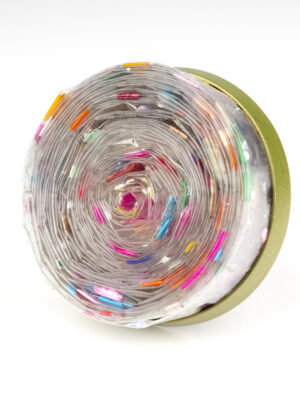
At the end, who knows, it might be that the works look alike. But that’s also interesting, to see through this simple act of accumulation so clearly that even though there’s so many significant differences between the locations and people, you can find many similarities as well.
VM: How do you see your work evolving in the future?
MF: I think expanding this series is my long term goal. I would like to keep collecting material from more cities and countries. There’s a lot of places that I would like to travel to. I’d never been to the African continent. That is one of my dreams.
At the end, who knows, it might be that the works look alike. But that’s also interesting, to see through this simple act of accumulation so clearly that even though there’s so many significant differences between the locations and people, you can find many similarities as well. Going back, just like the Japanese calligraphy, it’s a very subtle and poetic process yet full of action and small stories that could and probably are part of something much bigger.
VM: Do you have any exhibitions planned for the coming months?
MF: Yes, I have one upcoming group exhibition: location services, which was planned with two other American artists, Kerianne Quick and Demitra Thomloudis. All three of us are interested in exploring different locations, its materials and site specific work. Kerianne’s work is concerned with the origin of materials and fascinated by peoples personal histories. And Demi is interested in various architectural forms of the buildings. So the three of us had a show at the Craft in America Center in Los Angeles and that show is going to travel to Baltimore Jewelry Center in September 2023.
Additionally, Few of my pieces (material collected between the border of Mexico/USA) will be included as a part of La Frontera Exhibition. The original exhibition was organized by Mike Holms and Lorena Lazard and traveled to Museo Franz Mayer in México City in 2013 and toured the US through 2014 and later in 2018 at Museum of Arts & Design in New York.
La Frontera exhibition explored the physical space where the relationship between México and the U.S. is most evident. The new Exhibition will activate cross-border partnerships through sister exhibitions on each side of the border. In 2023 in El Paso /Ciudad Juárez and in 2024 San Diego/Tijuana.

Motoko presented her work at Munich Jewellery Week 2023, as part of the MJW Hub. This interview was conducted live on site, followed up via email. Motoko also performed one of her pieces, ‘documenting’ the street surrounding the Hub, and presenting it on display for the remainder of the week.
